Abstract
Anaerobic granules degrading pentachlorophenol (PCP) with specific PCP removal activity up to 14.6 mg/g of volatile suspended solids per day were developed in a laboratory-scale anaerobic upflow sludge blanket reactor at 28 degrees C, by using a mixture of acetate, propionate, butyrate, and methanol as the carbon source. The reactor was able to treat synthetic wastewater containing 40 to 60 mg of PCP per liter at a volumetric loading rate of up to 90 mg/liter of reactor volume per day, with a hydraulic retention time of 10.8 to 15 h. PCP removal of more than 99% was achieved. Results of adsorption of PCP by granular biomass indicated that the PCP removal by the granules was due to biodegradation rather than adsorption. A radiotracer assay demonstrated that the PCP-degrading granules mineralized [14C]PCP to 14CH4 and 14CO2. Toxicity test results indicated that syntrophic propionate degraders and acetate-utilizing methanogens were more sensitive to PCP than syntrophic butyrate degraders. The PCP-degrading granules also exhibited a higher tolerance to the inhibition caused by PCP for methane production and degradation of acetate, propionate, and butyrate, compared with anaerobic granules unadapted to PCP.
Full text
PDF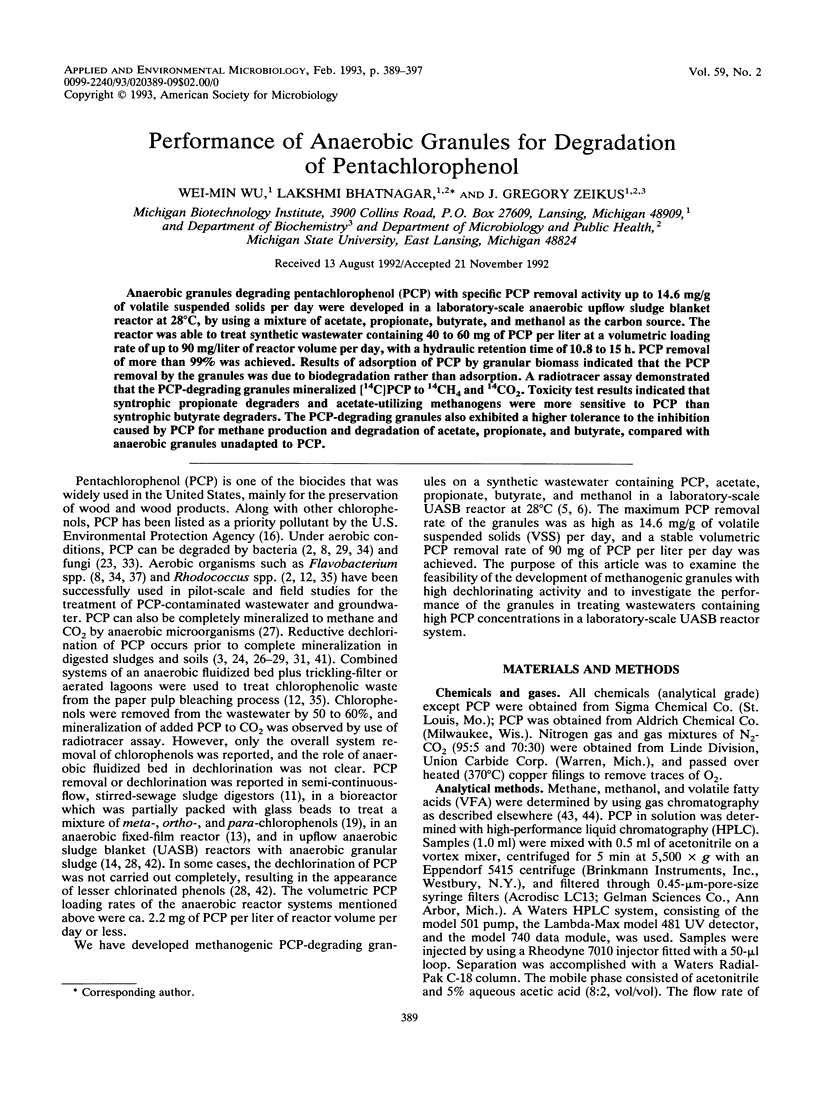
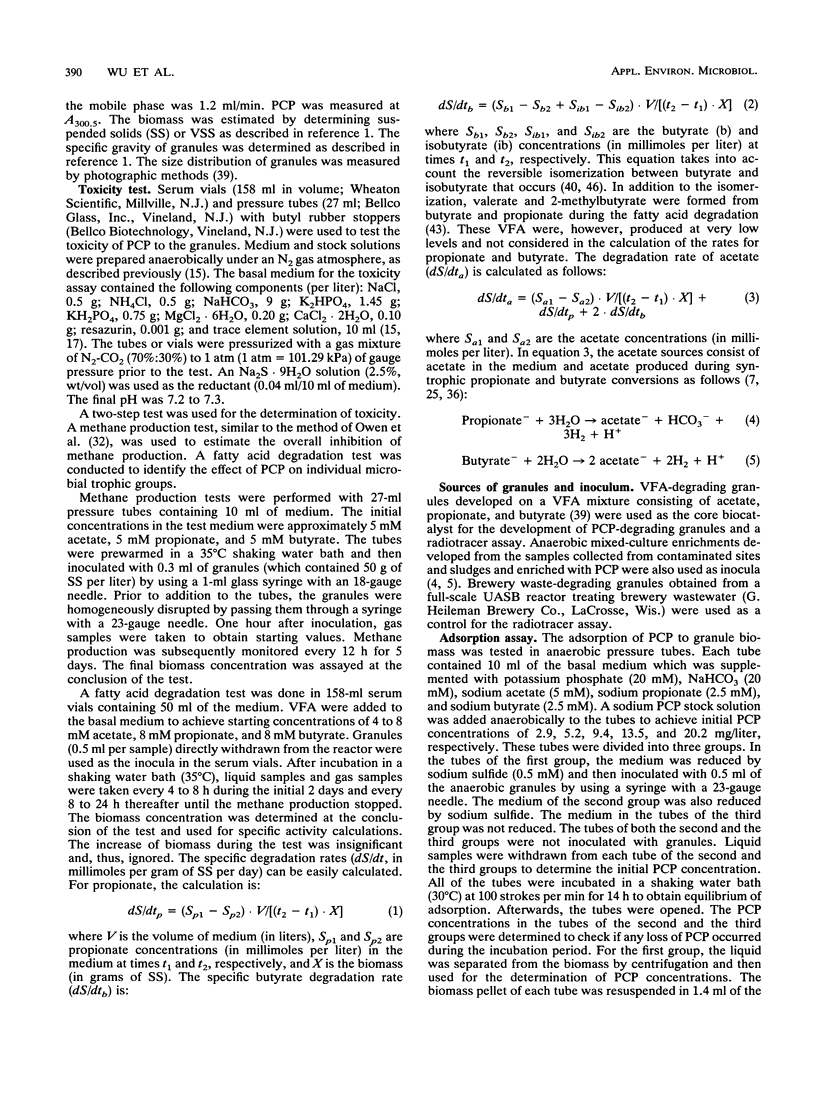
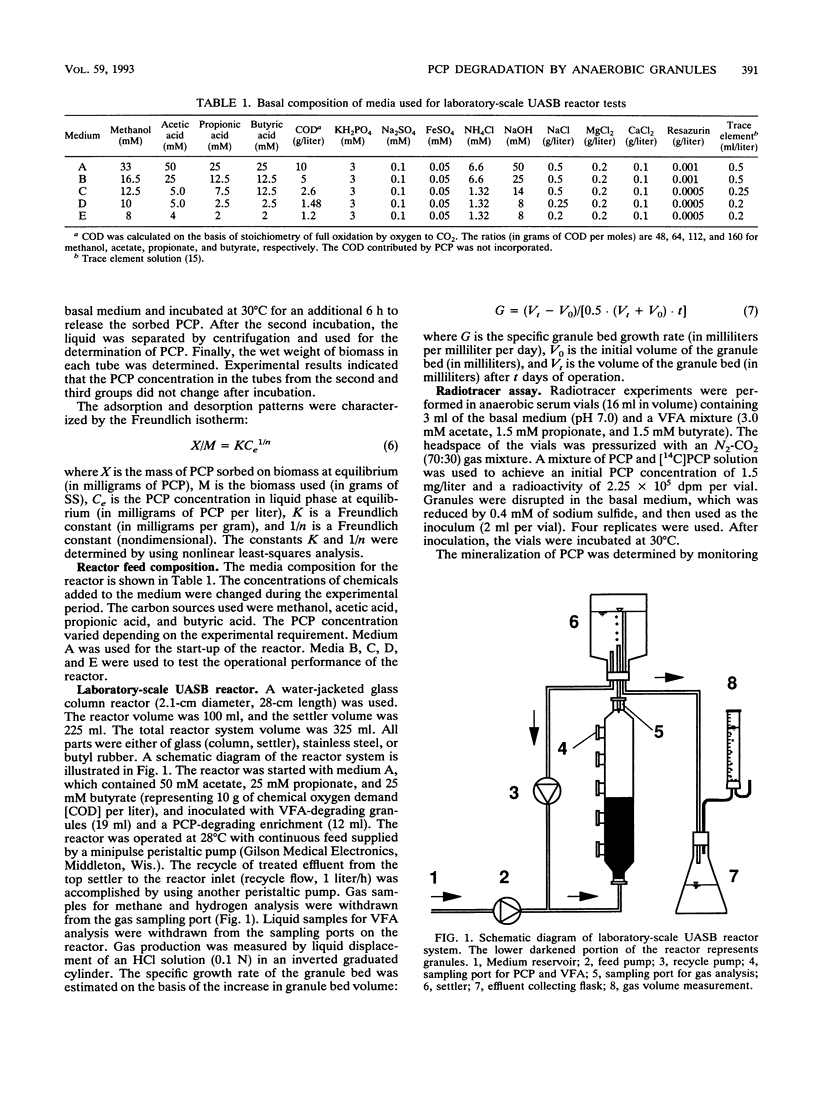

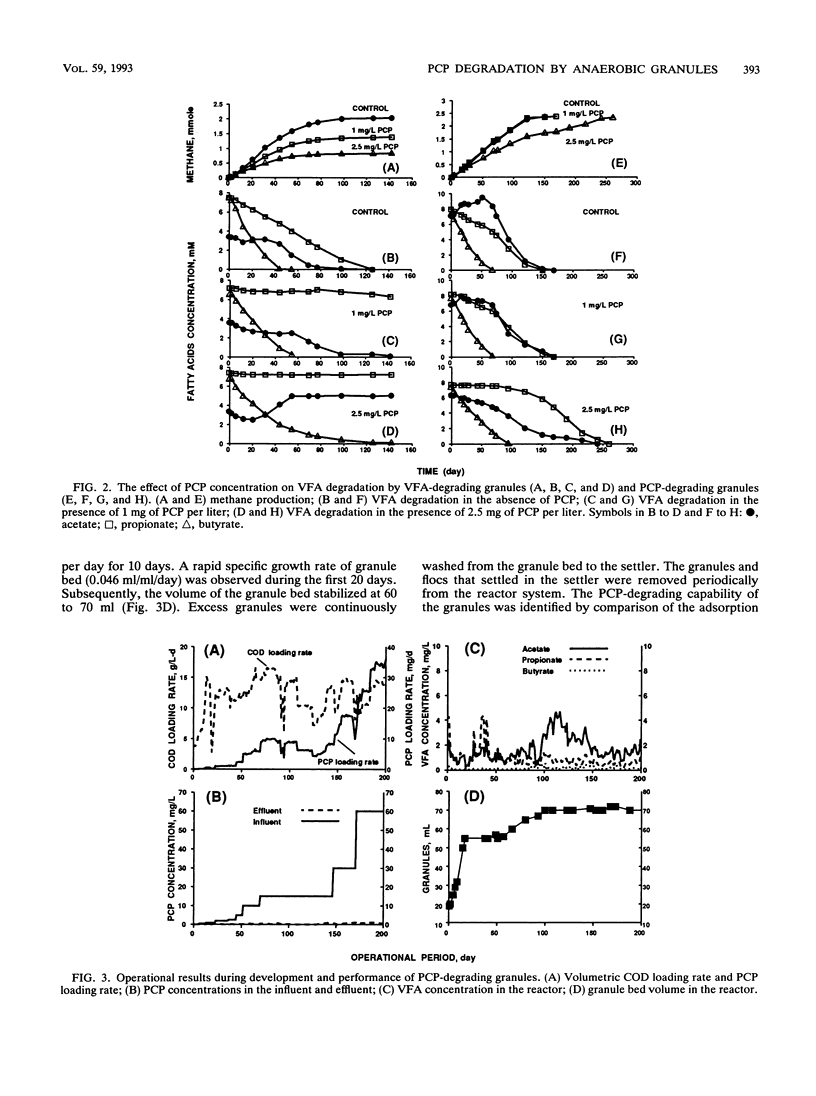
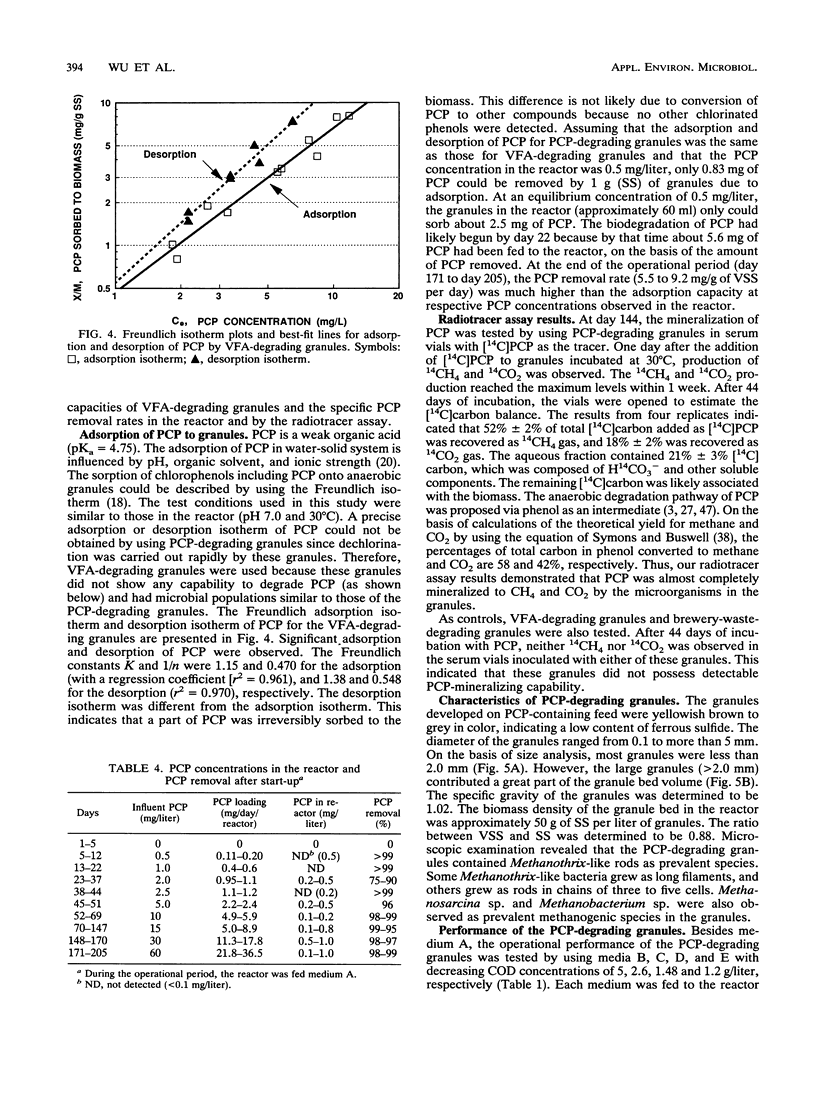
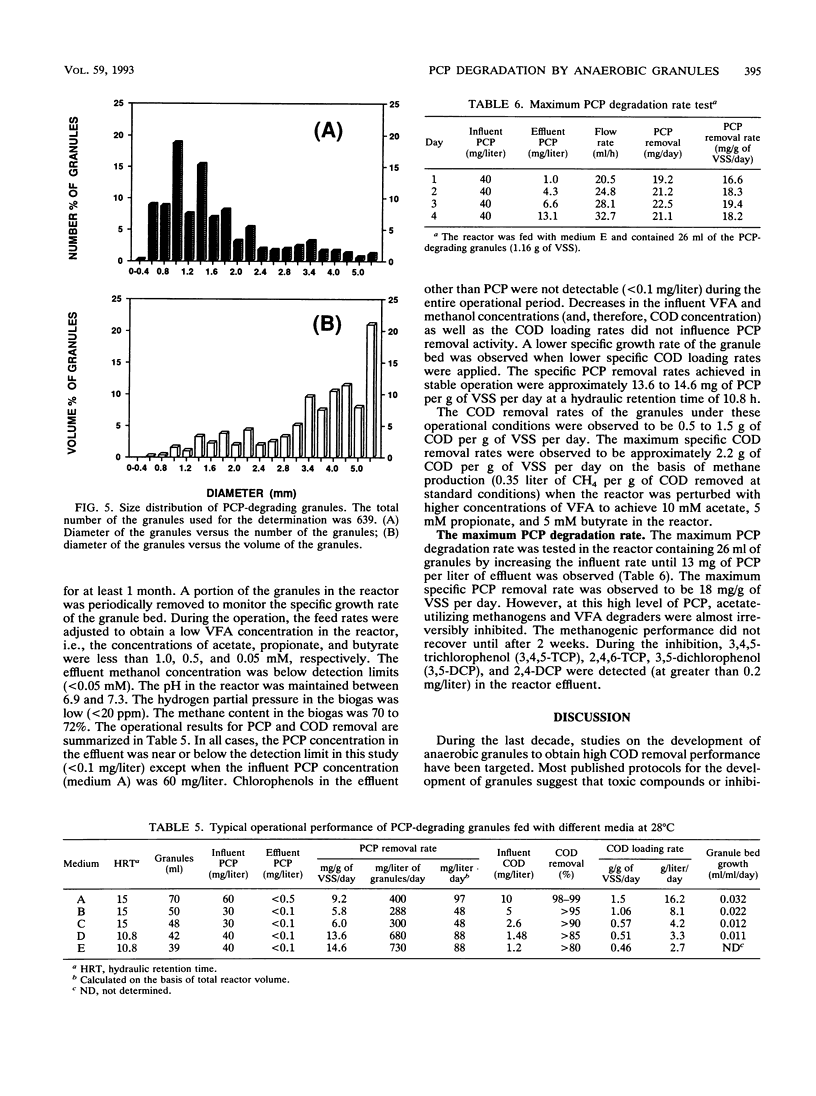

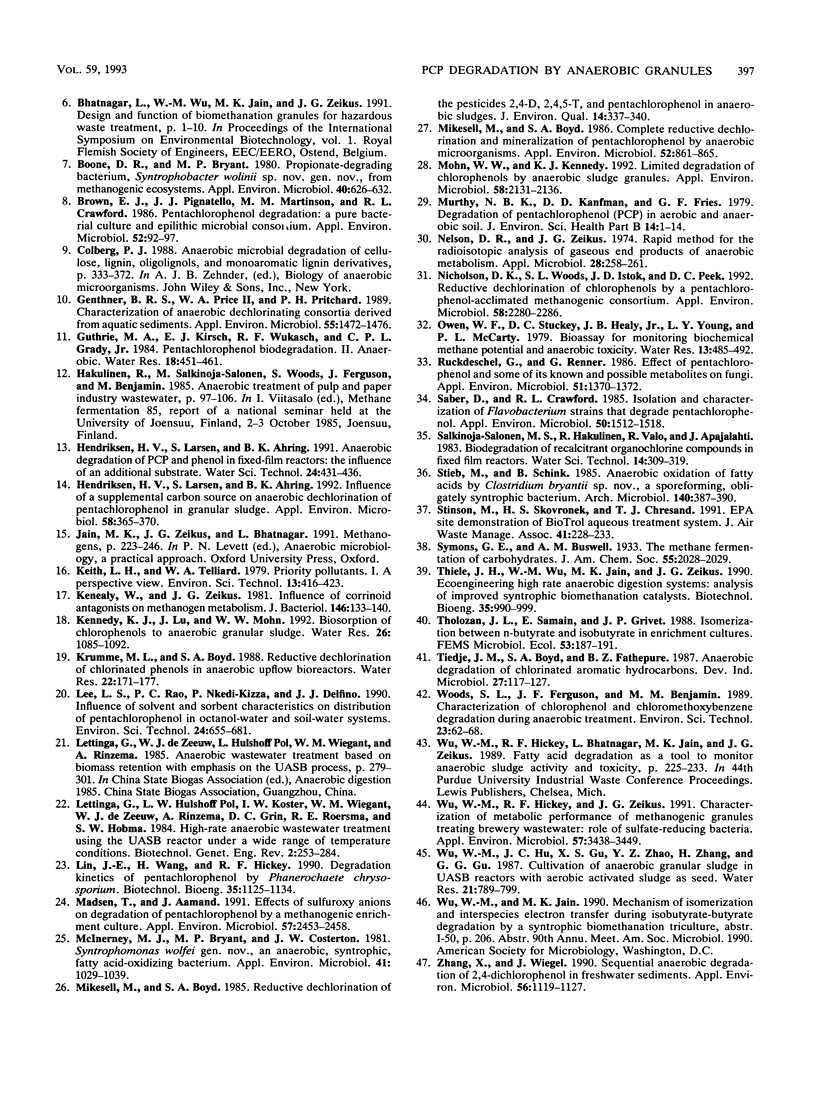
Selected References
These references are in PubMed. This may not be the complete list of references from this article.
- Boone D. R., Bryant M. P. Propionate-Degrading Bacterium, Syntrophobacter wolinii sp. nov. gen. nov., from Methanogenic Ecosystems. Appl Environ Microbiol. 1980 Sep;40(3):626–632. doi: 10.1128/aem.40.3.626-632.1980. [DOI] [PMC free article] [PubMed] [Google Scholar]
- Brown E. J., Pignatello J. J., Martinson M. M., Crawford R. L. Pentachlorophenol degradation: a pure bacterial culture and an epilithic microbial consortium. Appl Environ Microbiol. 1986 Jul;52(1):92–97. doi: 10.1128/aem.52.1.92-97.1986. [DOI] [PMC free article] [PubMed] [Google Scholar]
- Genthner B. R., Price W. A., Pritchard P. H. Characterization of anaerobic dechlorinating consortia derived from aquatic sediments. Appl Environ Microbiol. 1989 Jun;55(6):1472–1476. doi: 10.1128/aem.55.6.1472-1476.1989. [DOI] [PMC free article] [PubMed] [Google Scholar]
- Hendriksen H. V., Larsen S., Ahring B. K. Influence of a supplemental carbon source on anaerobic dechlorination of pentachlorophenol in granular sludge. Appl Environ Microbiol. 1992 Jan;58(1):365–370. doi: 10.1128/aem.58.1.365-370.1992. [DOI] [PMC free article] [PubMed] [Google Scholar]
- Kenealy W., Zeikus J. G. Influence of corrinoid antagonists on methanogen metabolism. J Bacteriol. 1981 Apr;146(1):133–140. doi: 10.1128/jb.146.1.133-140.1981. [DOI] [PMC free article] [PubMed] [Google Scholar]
- Madsen T., Aamand J. Effects of sulfuroxy anions on degradation of pentachlorophenol by a methanogenic enrichment culture. Appl Environ Microbiol. 1991 Sep;57(9):2453–2458. doi: 10.1128/aem.57.9.2453-2458.1991. [DOI] [PMC free article] [PubMed] [Google Scholar]
- McInerney M. J., Bryant M. P., Hespell R. B., Costerton J. W. Syntrophomonas wolfei gen. nov. sp. nov., an Anaerobic, Syntrophic, Fatty Acid-Oxidizing Bacterium. Appl Environ Microbiol. 1981 Apr;41(4):1029–1039. doi: 10.1128/aem.41.4.1029-1039.1981. [DOI] [PMC free article] [PubMed] [Google Scholar]
- Mikesell M. D., Boyd S. A. Complete reductive dechlorination and mineralization of pentachlorophenol by anaerobic microorganisms. Appl Environ Microbiol. 1986 Oct;52(4):861–865. doi: 10.1128/aem.52.4.861-865.1986. [DOI] [PMC free article] [PubMed] [Google Scholar]
- Mohn W. W., Kennedy K. J. Limited degradation of chlorophenols by anaerobic sludge granules. Appl Environ Microbiol. 1992 Jul;58(7):2131–2136. doi: 10.1128/aem.58.7.2131-2136.1992. [DOI] [PMC free article] [PubMed] [Google Scholar]
- Murthy N. B., Kaufman D. D., Fries G. F. Degradation of pentachlorophenol (PCP) in aerobic and anaerobic soil. J Environ Sci Health B. 1979;14(1):1–14. doi: 10.1080/03601237909372110. [DOI] [PubMed] [Google Scholar]
- Nelson D. R., Zeikus J. G. Rapid method for the radioisotopic analysis of gaseous end products of anaerobic metabolism. Appl Microbiol. 1974 Aug;28(2):258–261. doi: 10.1128/am.28.2.258-261.1974. [DOI] [PMC free article] [PubMed] [Google Scholar]
- Nicholson D. K., Woods S. L., Istok J. D., Peek D. C. Reductive dechlorination of chlorophenols by a pentachlorophenol- acclimated methanogenic consortium. Appl Environ Microbiol. 1992 Jul;58(7):2280–2286. doi: 10.1128/aem.58.7.2280-2286.1992. [DOI] [PMC free article] [PubMed] [Google Scholar]
- Ruckdeschel G., Renner G. Effects of pentachlorophenol and some of its known and possible metabolites on fungi. Appl Environ Microbiol. 1986 Jun;51(6):1370–1372. doi: 10.1128/aem.51.6.1370-1372.1986. [DOI] [PMC free article] [PubMed] [Google Scholar]
- Saber D. L., Crawford R. L. Isolation and characterization of Flavobacterium strains that degrade pentachlorophenol. Appl Environ Microbiol. 1985 Dec;50(6):1512–1518. doi: 10.1128/aem.50.6.1512-1518.1985. [DOI] [PMC free article] [PubMed] [Google Scholar]
- Stinson M. K., Skovronek H. S., Chresand T. J. EPA site demonstration of BioTrol aqueous treatment system. J Air Waste Manage Assoc. 1991 Feb;41(2):228–233. doi: 10.1080/10473289.1991.10466839. [DOI] [PubMed] [Google Scholar]
- Wu W. M., Hickey R. F., Zeikus J. G. Characterization of metabolic performance of methanogenic granules treating brewery wastewater: role of sulfate-reducing bacteria. Appl Environ Microbiol. 1991 Dec;57(12):3438–3449. doi: 10.1128/aem.57.12.3438-3449.1991. [DOI] [PMC free article] [PubMed] [Google Scholar]
- Zhang X., Wiegel J. Sequential anaerobic degradation of 2,4-dichlorophenol in freshwater sediments. Appl Environ Microbiol. 1990 Apr;56(4):1119–1127. doi: 10.1128/aem.56.4.1119-1127.1990. [DOI] [PMC free article] [PubMed] [Google Scholar]


